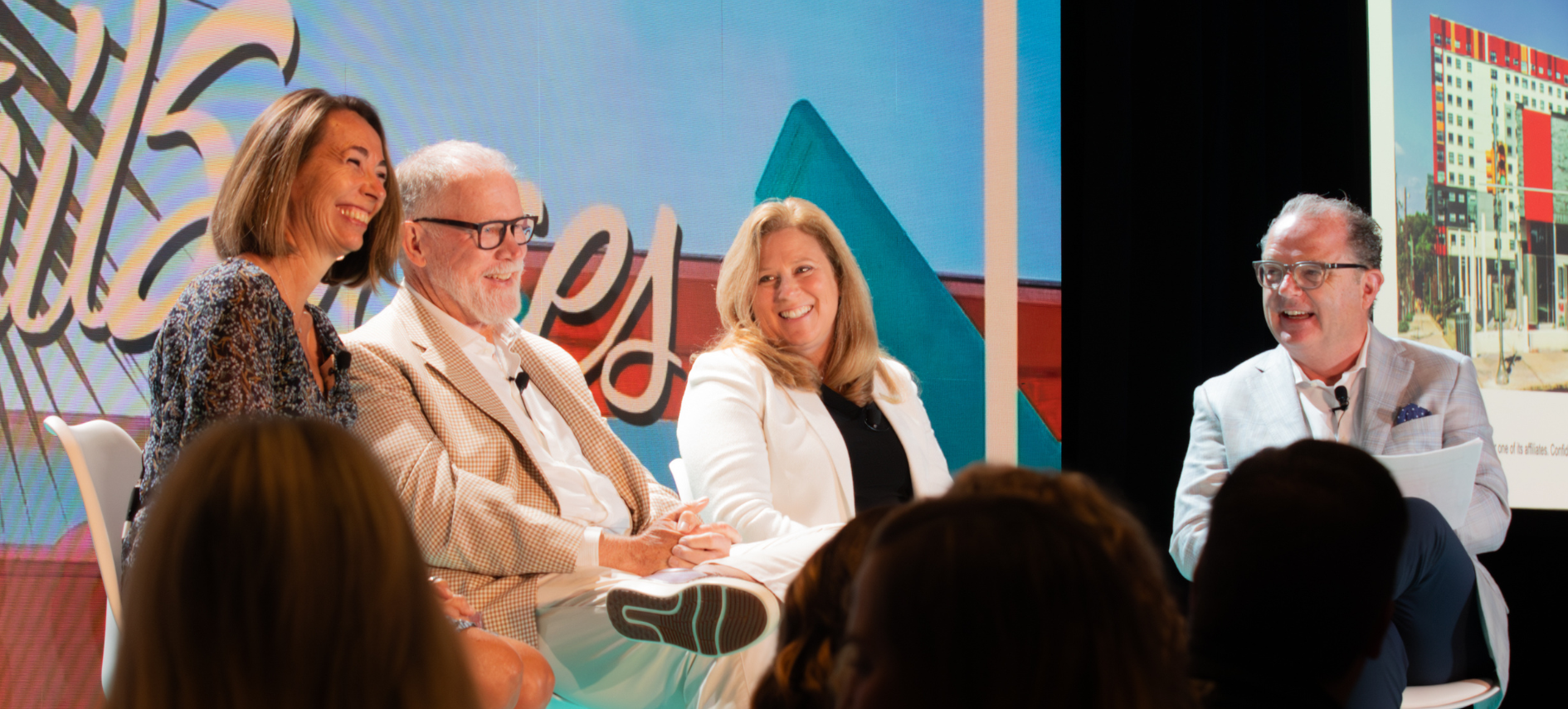"We saw a funnel that had slightly dried up and we had lost some top line revenue," admitted Shea Jensen, President of Urban Outfitters North America, describing the wake-up call that forced transformation. At RetailSpaces, Jensen and Melissa Gonzalez of MG2 revealed how Urban Outfitters developed a strategy to rebuild their brand after losing relevance with young consumers who no longer view counterculture as cool.
When Jensen joined Urban Outfitters a year ago, the retailer faced a harsh reality: their traditional "urban, potentially grungy, potentially counterculture" positioning had become obsolete. "Today's customer does not see that counterculture is cool because all cultures are welcome to young customers today," Jensen explained.
Following Customers, Not Assumptions
The real estate implications were immediate and profound. "We're typically known as being an urban brand with street retail in great cities like New York City," Jensen explained. "But some of our best stores happen to be in some of this country's best suburban malls."
This revelation led to a data-driven real estate strategy focused on population density analysis to identify optimal locations. The goal: accessing more young customers wherever they live, not just where the brand historically thought they should be.
The College Town Advantage
Perhaps Urban Outfitters' most distinctive asset is its presence in college towns—23 stores positioned "literally at the doorstep of tens of thousands of college students." As Jensen put it: "They could wake up and roll outside the door of their dorm or their apartment, and find Urban Outfitters."
This real estate strategy proves particularly valuable for a generation that "started high school in their basement" during the pandemic. These students view physical retail as an experience in itself—the opposite of millennials, who initially found digital shopping more enjoyable.
"They were looking for a new home and neighborhood, and they were looking for stability," Jensen noted about incoming freshmen. This insight transforms store positioning from simple retail to community anchor.
Design Evolution: From Post-Industrial to Beauty-Forward
The physical transformation of Urban Outfitters stores reflects the brand's broader strategic shift. Moving away from its signature "post-industrial, potentially grungy environment," the retailer is creating spaces that are "more upbeat, more welcoming" through specific material changes: adding pink to stores ("very, very new to Urban Outfitters"), replacing post-industrial steel and plywood with new tile and colored walls, and incorporating lighter, more modern materials.
This design evolution supports the expansion into beauty—a category Jensen identified as crucial for Gen Z, particularly skincare, fragrance, nail products, and "glam" items like fake freckles and temporary tattoos. "We're establishing dedicated beauty areas of our store, adding some color, creating destinations," Jensen explained. These beauty zones serve multiple strategic purposes: driving repeat traffic, adding feminine touches to balance masculine aesthetics, and providing discovery moments that align with Gen Z's love of "FOMO."
From Experience-First to Gen Alpha Readiness
Urban Outfitters recognizes a fundamental shift: while millennials initially embraced digital shopping, Gen Z views physical retail as the preferred experience. This drives investments in food and beverage partnerships for college campus activations and surprise-and-delight moments that align with Gen Z values.
As Gen Alpha (currently up to 15 years old) enters the customer funnel, Jensen's team maintains their research-driven curiosity. "If our team remains curious and we can emerge as a place that Gen Alpha considers a destination they want to shop, then we would feel like we're doing our job," Jensen explained. As the youngest brand in the Urban Outfitters Inc. family, the company serves as the "acquisition point for young customers" who can graduate through Free People and Anthropologie as they age.
The Bottom Line
Jensen's closing message resonated with optimism for the entire industry: "Retail is where it's at, people. Every sign from these customers tells us that they love getting up and going to a store, and that's really exciting. We're back at it."
The key lies in constant curiosity about changing youth culture and the willingness to abandon legacy assumptions when data points in new directions.
Watch the full talk below 👇
Posted by
Physical Retail Reimagined.
RetailSpaces is a community for store development and design innovators.
March 29-31, 2026 | San Antonio, TX
Learn More!







Comments